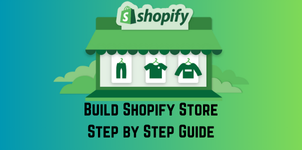How to Start a Shopify Store A Step-by-Step Guide
Starting a Shopify store can be a game-changer for your business. Our step-by-step guide takes you through the entire process, ensuring you have all the knowledge needed to launch a successful online store. From choosing the right Shopify plan to customizing your store, adding products, setting up payment gateways, and marketing, we've got you covered. Whether you're taking a Shopify course in Lahore, Shopify course in Pakistan, or exploring Shopify online courses, this guide is tailored for everyone, including those interested in dropshipping. Learn with free and paid courses, and get the best Shopify training to grow your e-commerce business.
How to Start a Shopify Store from Scratch: A Step-by-Step Guide
Are you looking to dive into the world of e-commerce? Shopify is one of the most powerful platforms available, offering everything you need to build, launch, and grow an online store. Whether you're interested in a Shopify course to get started or want to refine your skills with a Shopify dropshipping course, this guide will walk you through the entire process of creating your Shopify store from scratch.
Step 1: Sign Up for Shopify
The first step in your journey is signing up for Shopify. You can start with a Shopify free course to get a basic understanding of the platform before committing to a plan. Shopify offers a 14-day free trial, allowing you to explore its features and set up your store without any upfront cost.
Step 2: Choose the Right Shopify Plan
Once you’ve familiarized yourself with the basics, it’s time to choose the right plan. Whether you're taking a Shopify course in Lahore or a Shopify course in Pakistan, understanding the pricing options is crucial. Shopify offers several plans, from Basic to Advanced, each tailored to different business needs. If you’re planning to focus on dropshipping, a Shopify dropshipping course free might guide you on which plan is most suitable for your business model.
Step 3: Select a Shopify Theme
Your store’s appearance matters, so select a theme that aligns with your brand. The best Shopify course will often emphasize the importance of user experience and design. Shopify offers both free and paid themes, each customizable to fit your unique style. If you're new to design, a Shopify online course can help you understand how to tweak your theme for optimal performance.
Step 4: Customize Your Store
Customizing your store involves more than just adding a logo and selecting colors. You'll need to set up your navigation, add products, and configure your payment gateways. This is where Shopify training comes in handy, especially if you’re looking for detailed guidance. Shopify for online courses often includes modules on store customization, ensuring you don’t miss any essential steps.
Step 5: Add Products
Adding products is a critical step in setting up your Shopify store. If you're focusing on dropshipping, taking a dropshipping Shopify course or a Shopify courses dropshipping will provide insights into product sourcing and inventory management. You can add products manually or import them from suppliers, depending on your business model.
Step 6: Set Up Payment Gateways
Shopify offers a variety of payment gateway options, making it easy for your customers to purchase products. Setting up your payment gateways can be complex, especially if you're dealing with international customers. A Shopify full course will typically cover the best practices for configuring your payment settings to ensure smooth transactions.
Step 7: Configure Shipping Settings
Shipping is a vital part of the e-commerce experience. Shopify provides tools to help you set up shipping zones, rates, and methods. If you're new to this, consider enrolling in a Shopify course in Lahore that covers shipping and logistics. This will ensure you understand how to set up your shipping correctly, reducing the risk of customer complaints.
Step 8: Launch Your Store
Before you launch, make sure everything is in place. Review your products, test your payment gateways, and ensure your site is optimized for mobile users. Shopify classes often include checklists to ensure your store is ready for launch. Once everything is set, hit the launch button and start promoting your store.
Step 9: Market Your Shopify Store
Now that your store is live, it's time to attract customers. Shopify has built-in marketing tools, but you may also want to invest in additional strategies like SEO, social media marketing, and email campaigns. Enrolling in a Shopify online course focusing on digital marketing can provide the knowledge you need to drive traffic and convert visitors into customers.
Step 10: Keep Learning and Improving
The world of e-commerce is ever-evolving, and so should your skills. Whether you're looking for advanced Shopify courses free or want to invest in the best Shopify course available, continuous learning is key to staying ahead of the competition. Explore Shopify training options regularly to keep your store performing at its best.

